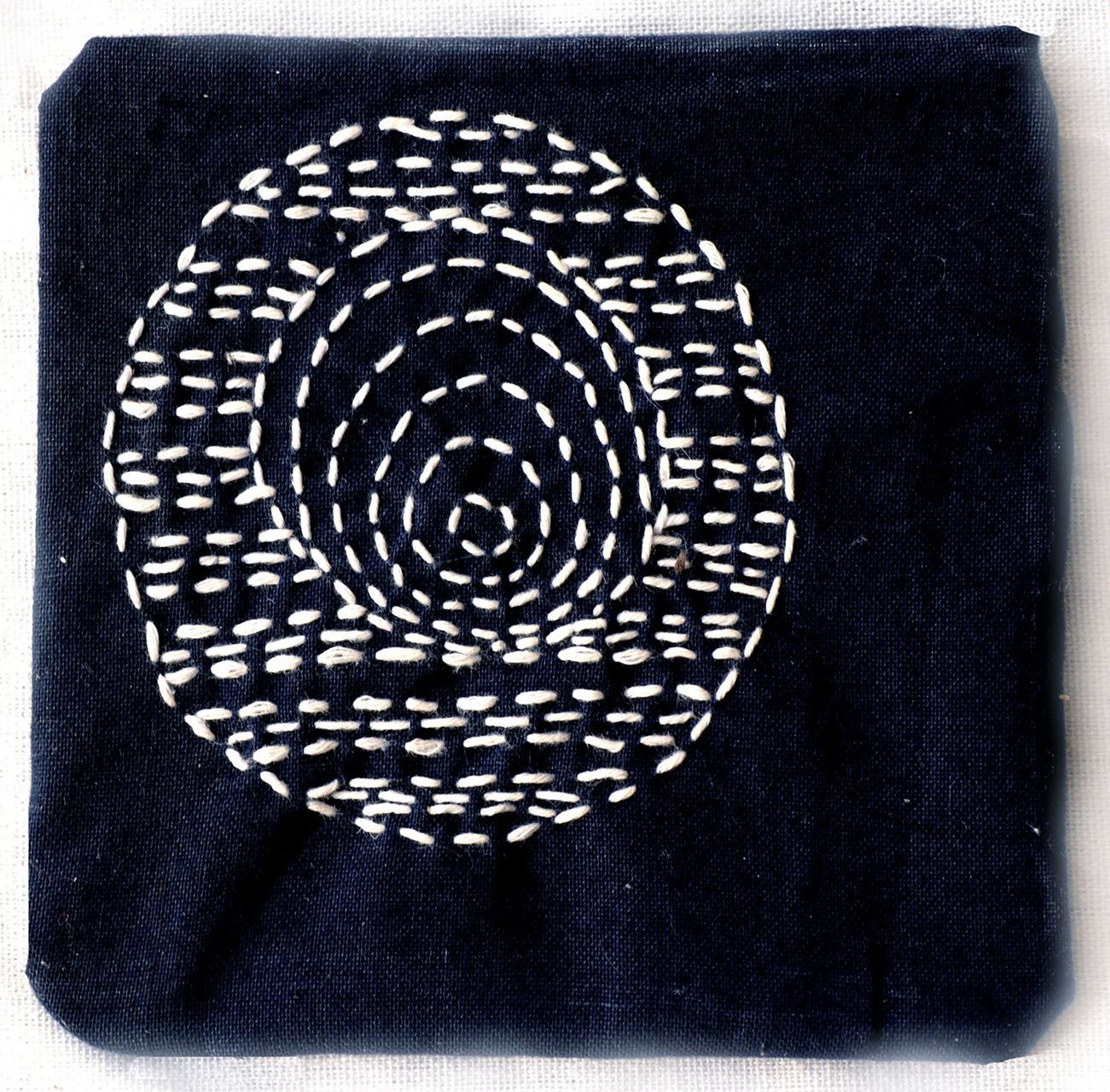Register Online Now through March 19, 2024.
Join us for Boro-Inspired Patchwork with Wendy Arbeit.
 Learn a patching, mending, and art stitching technique first used centuries ago by the very poorest Japanese to extend the life of their "boro," or ragged hemp clothing. Today, the concept of "mottainai" – too good to waste – continues in Japan in new clothing that retains much of the irregular, ragged look of the originals, but with stitchery understated or absent. By contrast, in the U.S. the potential of the running stitch is emphasized while it enhances the applied patches. That’s the version you’ll learn.
Learn a patching, mending, and art stitching technique first used centuries ago by the very poorest Japanese to extend the life of their "boro," or ragged hemp clothing. Today, the concept of "mottainai" – too good to waste – continues in Japan in new clothing that retains much of the irregular, ragged look of the originals, but with stitchery understated or absent. By contrast, in the U.S. the potential of the running stitch is emphasized while it enhances the applied patches. That’s the version you’ll learn.
 You’ll love this approach (sometimes called visible mending) to easily repair or enhance garments, or even create art as small as pendants, or as large as hangings –– armed just with fabric, needle, and thread. In this class you’ll find out how boro evolved, then be directed through a number of small projects, each designed to focus on a different aspect of the running stitch and its combinations, while considering its effects on the shapes and placements of the accompanying patches. The grand finale comes when you add backings to transform your newest accomplishments into unique coasters.
You’ll love this approach (sometimes called visible mending) to easily repair or enhance garments, or even create art as small as pendants, or as large as hangings –– armed just with fabric, needle, and thread. In this class you’ll find out how boro evolved, then be directed through a number of small projects, each designed to focus on a different aspect of the running stitch and its combinations, while considering its effects on the shapes and placements of the accompanying patches. The grand finale comes when you add backings to transform your newest accomplishments into unique coasters.
This class is suitable for both beginners and continuing boro students who wish to build on their previous experience.
$10 materials fee includes vintage Japanese fabric, sashiko thread, needle, needle threader, a cardboard coaster, many pages of sashiko and boro descriptions, and photos of old and new examples of the boro approach. Feel free to bring any items you’d like to mend or adorn to discuss.
What to bring:
- $10 supply fee
- Scissors
- Garments/items to mend or adorn
 Instructor Bio
Instructor Bio
Wendy Arbeit received an MA in Art from Columbia University. She started making crafts from an early age and continued after her degree by learning the traditional arts of beading, back-strap weaving, basket making, and twining from Iroquois, Mexican, and Pacific island people. She learned sashiko and temari from Japanese books at a time when none were available in English and kumihimo at a Japan-sponsored program.
She has written four traditional-craft related books, What Are Fronds For? a manual for plaiting coconut fronds; Baskets in Polynesia, a survey of central Polynesian baskets; Tapa in Tonga, an introduction to Tongan barkcloth; and finally the award-winning, Links to the Past: the Work of Early Hawaiian Artisans, a compendium of 1000 objects made within 50 years of Western contact.
Hawaiʻi Handweavers' Hui members receive a discounted class fee. If you are interested in becoming a member please click HERE.
This class is open to adults, and minors ages 12-17 when accompanied by a parent or guardian. If you are interested in taking the class with your child, please register online and add your child as a guest. Those registering for a Hawaiʻi Handweavers’ Hui class may add one guest based on availability.
We require a minimum of three participants for each class. A full refund will be issued to those registered, if class is cancelled by Hawaiʻi Handweavers’ Hui. Refunds for class registration cancellation by participant will be issued in full only if the cancellation is made more than 14 days before the class begins.
MAP Downtown Art Center - Parking, Enter the Chinatown Gateway Garage from Bethel Street. Weekday rate: $3.00 for two hours, $1.50 for each additional 30 minutes. All-day weekday pass: $10.00 (park in the garage between 6:30 and 8:30 AM, and exit by 6 PM). Weekend rate: $.50 for 30 minutes, with a maximum fee of $3.00. All transactions by credit card.
MAP to HHH Classroom
For more information contact: classes@hawaiihandweavers.org
__________________________________________________________
HHH TERMS OF USE_CANCELLATION POLICY 5_2023.pdf